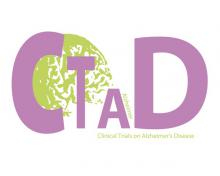Today, it is well recognized that regular physical activity during life is a major requirement for successful aging. It is also known that the immune system is influenced by physical activity and that increased inactivity contributes to the loss of immunity during aging.
The authors (1) of this review asked the following question: How the decrease in physical activity during aging contributes to the immune decline, which in turn predisposes to multi-morbidity?
During aging, the innate and the adaptive immune system change, we observe: a loss of migration capacity and antimicrobial functions of neutrophils and monocytes, reduced cytotoxicity of NK cells, reduced quality and quantity of antibodies produced by B cells, thymic atrophy and a higher frequency of differentiated T cells. In addition, it seems that immunosenescence, which is part of the aging process, is rather a cause of age-related diseases rather than a consequence of it. About physical activity, a study of cyclists aged from 55 to 79 has shown that physical activity improve immunosenescence rather than totally prevent it. However, how skeletal muscle regulates the immune system? During physical activity, the active muscle produce myokines, such as interleukin IL-6, which has anti-inflammatory actions by blocking the IL-1 receptor in monocytes and macrophages. IL-15, also released by muscle fibers, can promote naive T cells survival and NK cells cytotoxicity; while IL-7 maintain thymic functions. Muscle can also produce growth factors that will promote the activity of anti-inflammatory macrophages M2. Long-term physical activity also promotes the synthesis of catecholamines, increases the sensitivity of β2-adrenergic lymphocyte receptors and promotes senescent T cells apoptosis. All these phenomena contribute to increase the number and diversity of naive T cells, increasing vaccine protection and reducing the risk of infections.
In this context, physical activity has been proposed as therapy. First, as an immune adjuvant treatment. Indeed, a simple increase in physical activity can limit toxicity and increase the efficacy of anti-cancer therapies. However, individuals on chemotherapy are too weak to increase their physical activity. This is why, physical activity is recommended in pre-habilitation, before starting treatment.
Physical activity can also be used as therapy to prevent multi-morbidity. Studies with animal models have shown that physical activity increases life expectancy and prevents age-related disease. Senescent cells secrete pro-inflammatory cytokines (SASP) that promote the phenomenon of “inflamm-aging”. Physical activity can prevent this by targeting senescent cells; but also by counteracting other aging mechanisms like telomere shortening, loss of autophagy, pro-inflammatory phenotype, and epigenetic changes.
Life-long physical activity appears to be an essential element in reducing multi-morbidity and promoting successful aging, particularly by targeting immunosenescence. However, it is necessary to conduct interventional studies in humans to better study this causative link. The authors also suggest that physical activity prescriptions should be stratified in terms of dose and intensity. They also point out and that it will be important to identify the diseases for whose physical activity could be an effective treatment.
(1) Duggal, N.A., Niemiro, G., Harridge, S.D.R., Simpson, R.J., and Lord, J.M. (2019). Can physical activity ameliorate immunosenescence and thereby reduce age-related multi-morbidity? Nat. Rev. Immunol. 1.



